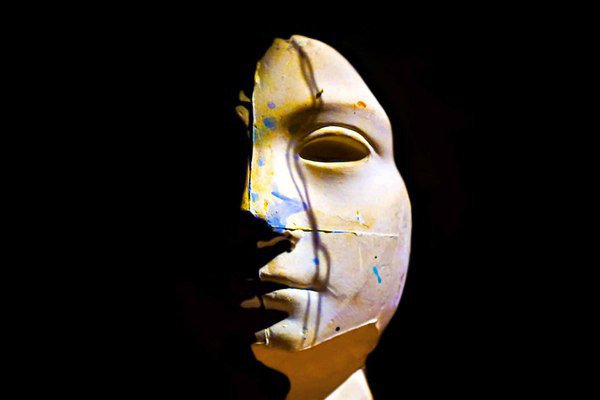Mario Rizzi
dal 28/4/2011 al 3/6/2011
Segnalato da
28/4/2011
Mario Rizzi
Podbielski Contemporary, Berlin
Partial Truths. The body of work displayed in the exhibition highlights acts of violence, terror and civil unrest, together with the issue of immigrants' integration.

Mario Rizzi’s exhibition Partial Truths aims to investigate and question a large framework of divergent interpretations of sensitive political events and social phenomena. The body of work displayed in the exhibition highlights acts of violence, terror and civil unrest, together with the issue of immigrants’ integration (seen both from the perspective of the homeland and the new nation). Partial Truths interrogates the notion of belief, trust and truth in (the partial, often constructed) information circulated by the states, individuals and the media. Rizzi’s work seeks to transcend current struggles of interpretations in a history of confrontation which cannot be reduced to facile oppositions or interpretations. Through the depiction of very complex realities, Rizzi’s way of working foregrounds an urgency of the process of telling the stories of others more than becoming embroiled in the specific socio- political issues behind individual stories. The artist strives to confront the viewer with specific situations, some examples being the war in Bosnia (Bosnia 1994-1997), Hanadi Jaradat’s suicide bombing in Israel/Palestine in 2003 (Hanadi, 2007), the acquisition of a new national identity (Limina, 2007) and the short visit of an immigrant in his homeland and subsequent departure back to his ‘new life’ (4th January 2004, 2011). Finally, the artist’s latest video piece Medjugorje (2011), produced specifically for this exhibition, examines the relationship between reason and faith and how natural and supernatural powers can trigger a physical and mental healing process. The series Bosnia 1994-1997 dates back to the Bosnian conflict. It consists of 18 photographs, all untitled, except for one portrait of the Sarajevi essayist and poet Izet Sarajlić (1930-2002). While some of the photographs make overtly historical and political references, most of them reflect upon a daily life, which resembles the one of any city under ‘normal’ circumstances. It seems, on the evidence of this particular selection, as if the Sarajevans succeeded in transcending the devastating, dehumanizing conditions of war, a state named by anthropologist Ivana Maček the ‘Imitation of Normal Life’.
Hanadi (2007) focuses on the phenomenon of women suicide bombers which signalled the escalation in the Israeli/Palestinian conflict. It underlines how reaction to suicide bombing – Hanadi Jaradat detonated herself in a restaurant in Haifa on 4 October 2003 – vary from one consideration to another, the bombers labelled either as martyrs, heroes or monster, terrorist. Whilst war generally enforces a structure of gender categorisation (woman/victim and man/attacker, defender), suicidal operations complicate this patriarchal dichotomy. The video pieces, Limina (2008) and 4th of January 2004 (2011) raises the question of cultural identity and normative “national” values, either from the ‘collective’ perspective of the ‘new’ state (Limina) or from the intimate, private sphere observed from the viewpoint of the homeland (4th of January 2004). Limina follows immigrants in the Netherlands through the process of‘naturalisation: from the attendance of compulsory language classes to the acquisition of their new citizenship during an official ceremony. The focal point of 4th January 2004 is about the end of the immigrant’s visit to his family in his homeland, his farewell to them and the long night-time journey to the airport, sensed as the point of departure. Displayed on a digital photo frame the same size as the series Bosnia 1994- 1997, the piece conveys its intimate and private aspect. For the purpose of his last video work, Medjugorje (2011), Rizzi travelled to the eponymous village in Bosnia-and-Herzegovina where, since 1981, the Virgin Mary seems to be regularly appearing to six people. One the one hand, Rizzi observes the phenomenon of pilgrimage and reflects on the trancelike state of the visionaries and on the experience of mystic self- transcendence. On the other hand, the artist witnesses the life of a community of ex-drug addicts, also living in Medjugorje, and the way they are journeying towards a normal, addiction free life. The video sets up a reflection on how to get out of crises and acts by staging an interplay between spiritual and physical healing, on one side natural, but on the other supernatural. The exhibition is accompanied by a catalogue with essays by Edi Muka and Isabelle de le Court.
Image: Mario Rizzi, Untitled from 'Bosnia 1994-1997'
Vernissage: Friday 29 April 2011, 7 pm
Podbielski Contemporary
Koppenplatz 5 - Berlin
Opening Hours: Tues-Sat, 12-6pm



